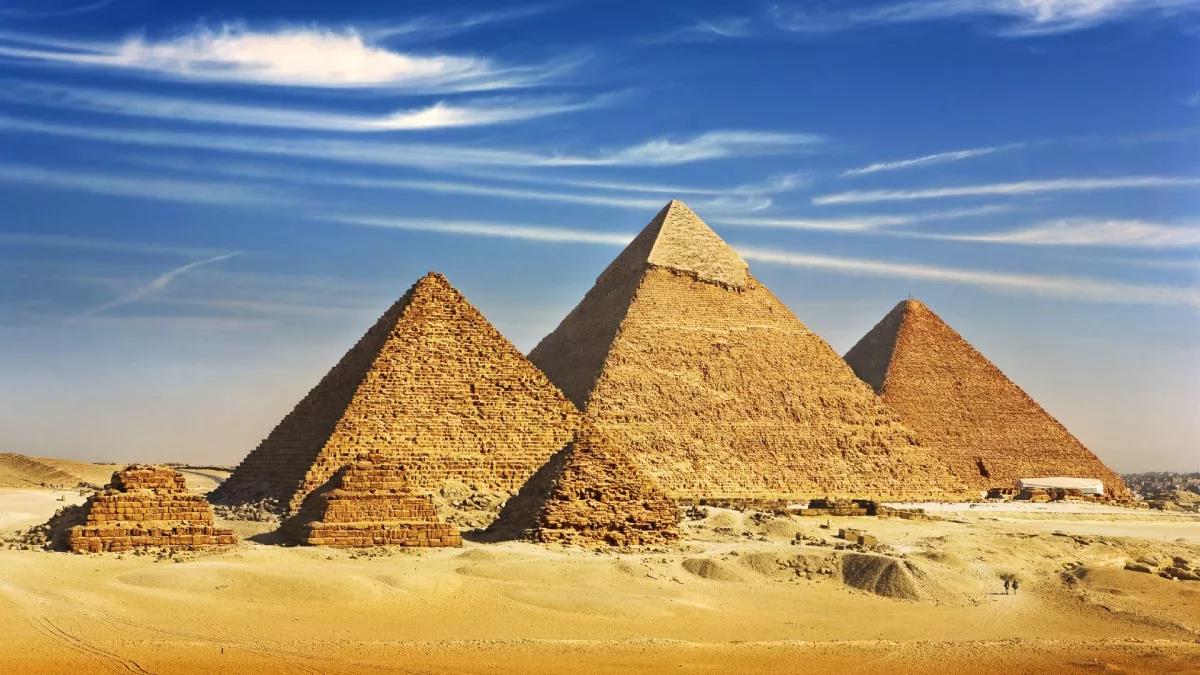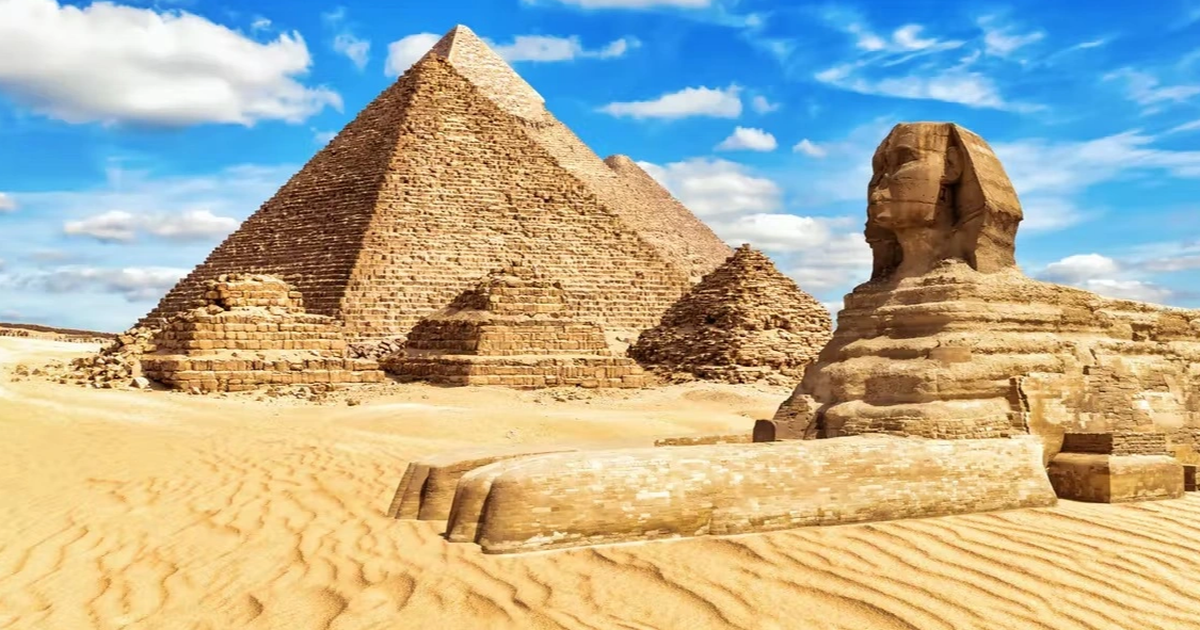
Built during a time when Egypt was one of the richest and most powerful civilizations in the world, the pyramids—especially the Great Pyramids of Giza—are some of the most magnificent man-made structures in history. Their massive scale reflects the unique role that the pharaoh, or king, played in ancient Egyptian society. Though pyramids were built from the beginning of the Old Kingdom to the close of the Ptolemaic period in the fourth century A.D., the peak of pyramid building began with the late third dynasty and continued until roughly the sixth (c. 2325 B.C.). More than 4,000 years later, the Egyptian pyramids still retain much of their majesty, providing a glimpse into the country’s rich and glorious past.
The Pharaoh in Egyptian Society
During the third and fourth dynasties of the Old Kingdom, Egypt enjoyed tremendous economic prosperity and stability. Kings held a unique position in Egyptian society. Somewhere in between human and divine, they were believed to have been chosen by the gods themselves to serve as their mediators on earth. Because of this, it was in everyone’s interest to keep the king’s majesty intact even after his death, when he was believed to become Osiris, god of the dead. The new pharaoh, in turn, became Horus, the falcon-god who served as protector of the sun god, Ra.

Did you know? The pyramid’s smooth, angled sides symbolized the rays of the sun and were designed to help the king’s soul ascend to heaven and join the gods, particularly the sun god Ra.
Ancient Egyptians believed that when the king died, part of his spirit (known as “ka”) remained with his body. To properly care for his spirit, the corpse was mummified, and everything the king would need in the afterlife was buried with him, including gold vessels, food, furniture and other offerings. The pyramids became the focus of a cult of the dead king that was supposed to continue well after his death. Their riches would provide not only for him, but also for the relatives, officials and priests who were buried near him.
The Early Pyramids
From the beginning of the Dynastic Era (2950 B.C.), royal tombs were carved into rock and covered with flat-roofed rectangular structures known as “mastabas,” which were precursors to the pyramids. The oldest known pyramid in Egypt was built around 2630 B.C. at Saqqara, for the third dynasty’s King Djoser. Known as the Step Pyramid, it began as a traditional mastaba but grew into something much more ambitious. As the story goes, the pyramid’s architect was Imhotep, a priest and healer who some 1,400 years later would be deified as the patron saint of scribes and physicians. Over the course of Djoser’s nearly 20-year reign, pyramid builders assembled six stepped layers of stone (as opposed to mud-brick, like most earlier tombs) that eventually reached a height of 204 feet (62 meters); it was the tallest building of its time. The Step Pyramid was surrounded by a complex of courtyards, temples and shrines where Djoser could enjoy his afterlife.





